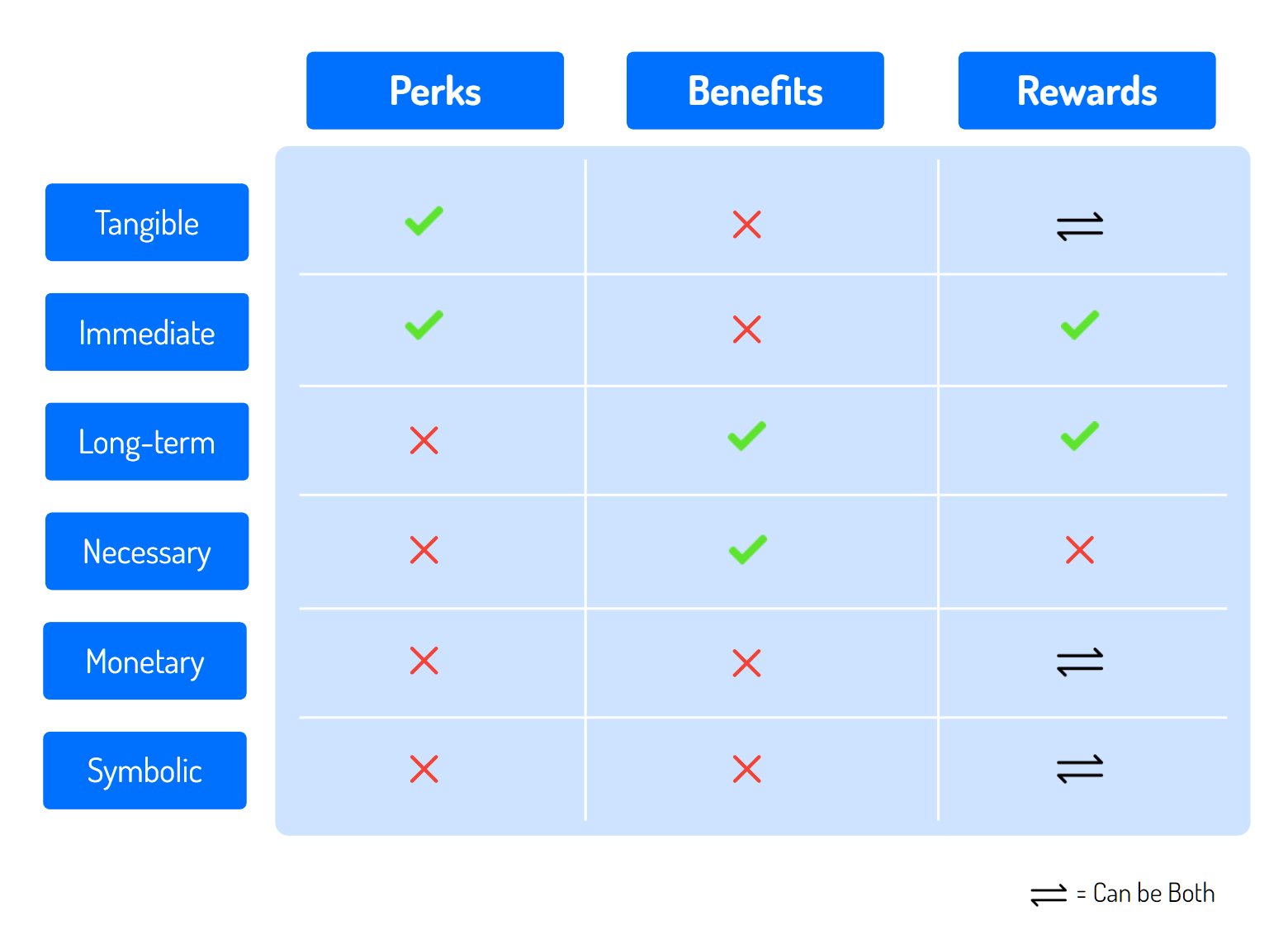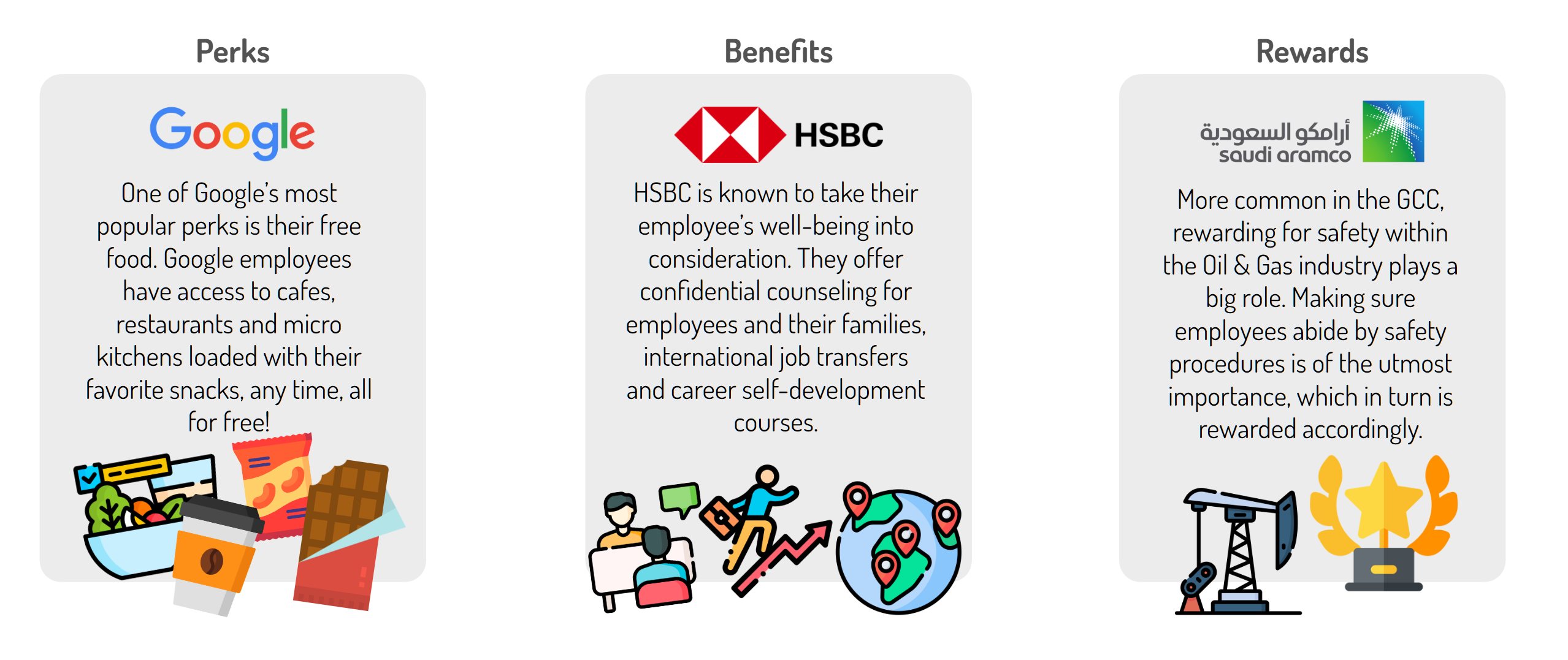Understanding employee motivation and satisfaction is crucial for improving productivity and retaining talent in the workplace. Motivated employees lead to higher engagement and increased productivity, while positive work environments reduce turnover rates. One way to accomplish this is by utilizing perks, benefits and rewards efficiently. Given in addition to employee salaries, these programs become powerful tools for employee happiness and success in the workplace. In this article, we’ll explore and define the differences between perks, benefits and rewards.
What are Perks?
Perks are non-wage offerings that are given to employees which are not part of the “benefits” package. They are given to support the employees beyond their standard salaries. Perks are less likely to appear in an employment contract since they are “nice-to-haves” rather than “need-to-haves”.
-
- Perks go beyond material benefits, creating a happier work environment that attracts, retains, and engages employees.
-
- Investing in perks is key in the overall success and vibrancy of the workplace. In fact, 62% of employees say workplace perks directly impact job satisfaction, and 30% of potential candidates would turn down a job if they didn’t offer perks.1
Examples of perks include:

What are Benefits?
Benefits are a form of non-monetary compensation for employees that are more impactful than perks due to the fact that they extend outside the workplace. If offered access to more benefits, 73% of employees would tend to stay with their current employer for longer.1
-
- The importance of benefits go beyond the workplace and help with employee work-life balance, health, and well-being.
-
- They’re also important for attracting potential employees and decreasing employee turnover rate.
-
- Benefits are “need-to-haves” and not only improve employee satisfaction, but help increase productivity, performance, and loyalty.
Examples of benefits include:

What are Rewards?
Rewards are given to employees based on merit, accomplishments, as well as on personal and seasonal occasions. They can take various forms such as Gift Cards, monetary awards, professional development, ‘thank you’ letters, flexible work arrangements and more. According to a recent study, 41% of employees prefer a Gift Card as a reward, yet only 15% of them get one.2
-
- Rewards are extremely important because they help recognize, motivate and appreciate the workforce.
-
- Effective rewards play a role in employee morale, and can boost productivity by 17%1.
-
- The importance of being recognized and valued is greatly underestimated, studies have shown that simple rewards can reduce employee turnover by 31%2.
Examples of rewards include:

Characteristics and Differences

When examined closely, all three characteristics of perks, benefits and rewards are different in terms of use cases, but all help improve the same thing, overall employee happiness.
When properly used together, they can be an invaluable tool to increase productivity in the workplace.
Real-World Examples

Sources:
1- https://shorturl.at/uDEP8
2- https://pages.blackhawknetwork.com/rs/922-CLG-920/images/infographic-employee_rewards_trends.pdf


